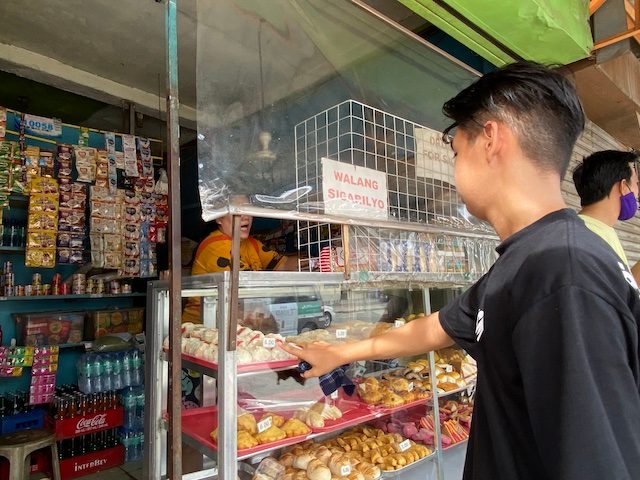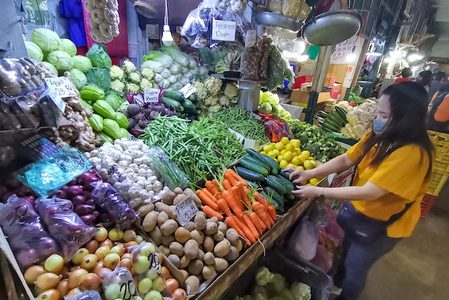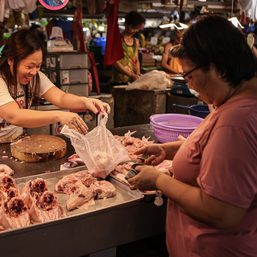SUMMARY
This is AI generated summarization, which may have errors. For context, always refer to the full article.

MANILA, Philippines – Whether its your favorite Instagram cake shop or your barangay’s street-side panaderia, all businesses dependent on sugar, flour, and eggs are reeling from high costs of ingredients, adding pressure on President Ferdinand Marcos Jr. to make good on his promise to make food affordable to Filipinos.
Nicole Allyson Uy, a millennial who owns The Flour Girl Bakery, thought she had adequately prepared back in June for a sugar price hike by buying more sacks of sugar after her suppliers alerted her of an impending sugar shortage.
“Unfortunately, two weeks after they informed me about the situation, they notified me again about the price increase,” she told Rappler on Wednesday, July 20.
“I’m honestly worried about this because aside from sugar, eggs and flour started to go up too! My business is very dependent on these ingredients and we’re a small business who can’t purchase in bulk so we don’t have a choice but to increase our prices too,” she added.
Her shop advertises through a colorful and cheerful Instagram account but also has a physical shop in Pasig.
“My clients understand the situation and some still buy from us but I’ve noticed how people are purchasing less the past few weeks, perhaps they are also saving because prices of commodities are all going up,” she said.

Meanwhile, Ricamil Bakery, a streetside carinderia and breadshop in Tumana, Marikina, has had to face angry customers about their decision to shrink their monay. They used to sell one 100-gram monay for P5. Now, they’ve halved the weight of their monay, but sell it for six pesos.
“Pinataasan lang namin ng piso tapos paliitan na lang namin. Mahal na kasi ‘yung bilihin eh, para makabawi sa ingredients. Lahat nagtaasan eh. Harina, asukal, margarine, mantika, lahat nagtaasan,” said 38-year-old Ado Bartolata, the shop’s baker.
(We just increased the price by a piso then made the bread smaller. Everything is expensive so we are just compensating through the ingredients. Everything got pricier – flour, sugar, margarine, oil, everything.)
He recalled how they used to buy one sack of sugar for P1,500 from their supplier back in 2018. Their last order cost P3,100 per sack. Inflation was pegged at 6.1% last June by the Philippine Statistics Authority.
Behind the bakeshop’s counter of pan de regla, crinkles, pan de sal, and sugar-sprinkled rolls hangs a “Bongbong Marcos 2022” calendar.
Ado’s wife, Maryjoy, recalls Marcos’ promise to bring down the per kilogram price of rice to P20.
“Sana magawaan niya ng paraan na pababaan niya ‘yung presyo ng bilihin. Kasi hindi namin kaya, kasi mababa ‘yung sahod tapos ‘yung bilihin mahal,” she told Rappler.
(I hope he finds a way to bring down the prices of goods. We can’t afford it, because what we earn is small then commodities are expensive.)
“Siya na nakaupo sa gobyerno, sana ‘yung pangako niya matupad na (He’s the one now in power, we hope he lives up to his promise),” quipped Ado.
The average price of refined sugar in Metro Manila supermarkets as of July 15 was P85.47, compared to P54.55 in September, according to Sugar Regulatory Administration’s monitoring. The wet market average price as of the same date was P89.93, compared to P52.53 in September.
Why is sugar more expensive?
The SRA partly blames the high sugar prices on “residual effects of Typhoon Odette” and rainy weather in the past months for lower sugar production locally.
The country’s estimated sugar production of 1.8 million metric tons is 200,000 tons short of the annual demand of 2.03 million metric tons observed in the past three years.
When the SRA tried to greenlight 200,000 metric tons of imported refined and bottlers’ grade sugar for industrial users early this year, it was stopped, in March, by legal action by local sugar producers who feared the importation of cheaper sugar would harm their businesses.
SRA Administrator Hermenegildo Serafica partly blamed the delay of these imports, authorized by Sugar Order No. 3 (SO3), for the current supply crunch.
“If SO3 had been implemented according to schedule, we would have been able to address the demand of the manufacturers early on, prices would not be this high and our raw sugar and refined sugar supply would not be at this critical volume,” he said in a statement in late June.
But in May, the SRA resumed implementation of SO3 and begun processing sugar import applications from Luzon, Visayas (expect Western Visayas), and Mindanao.
On top of domestic issues, the Russia-Ukraine war has contributed to higher prices of sugar and other commodities through its choking of oil and wheat supply. Higher oil prices globally mean higher transportation costs which have a domino effect on all goods because they need to be transported.
When fertilizer gets more expensive, this too has a domino effect on crops that rely on fertilizer, like corn and rice. When corn gets expensive, chicken, and pork prices shoot up too because they rely on corn-based feeds.
What is the government doing?
The short-term solutions the Marcos administration is looking into are implementing a “suggested retail price” or SRP for sugar and importing more sugar, this time for household use.
The DA has begun meeting with sugarcane farmers, millers, and other stakeholders to discuss an acceptable SRP, said Agriculture Undersecretary Kristine Evangelista in a Laging Handa briefing on Wednesday, July 20.
“We did a small group [discussion] yesterday and, this week, we will be talking to another group because we need to agree with the proposal given by our farmers and millers,” said Evangelista.
Former government officials have suggested an SRP of P46 or P47 per kilogram of sugar in the retail market, if the mill gate price of raw sugar is P1,500 per 50-kg bag.
Asked where the government plans to import sugar from, Evangelista said the details are yet to be finalized as this is also subject to discussions with various groups.
In the halls of Malacañang, Marcos is keenly aware of the pressure on him. Part of his decision to name himself concurrent agriculture secretary was to send a message that food security was a priority of his administration.
In the three weeks since he took his oath as president, Marcos has mostly been busy with stocktaking and gathering recommendations.
So far, he’s had three meetings with Department of Agriculture (DA) officials and one meeting with members of his new Private Sector Advisory Council involved in agriculture.
In at least one of his three Cabinet meetings so far, food security and inflation was on the agenda.
Marcos has so far beat the drum on improving production of rice, corn, vegetables, fisheries, and livestock. To do this, the DA is considering continuing its fertilizer subsidy program and possibly buying cheaper fertilizer from another government.
To bring down food prices, Marcos wants the DA to plan a network of farm-to-market roads and get the Food Terminal Incorporated to make agricultural products more accessible to impoverished communities. The roads and more accessible food depots are supposed to bring down transportation costs for agricultural products, thus lowering their retail price.
In Marikina, Ado Bartolata laughs nervously after being asked how long he thinks their business can last given the rising costs of running it.
“Siguro, kaya pa ‘ata ngayon. Ewan ko lang ‘pag sunod-sunod ‘yung pagtaas ng presyo.” (Perhaps, we can cope for now. I just don’t know what will happen if prices continue to rise.) – Rappler.com
Add a comment
How does this make you feel?






![[In This Economy] Peso approaches P60 per dollar once more. So what?](https://www.rappler.com/tachyon/2024/05/TL-peso-dollar-economy-may-24-2024.jpg?resize=257%2C257&crop=302px%2C0px%2C720px%2C720px)
There are no comments yet. Add your comment to start the conversation.